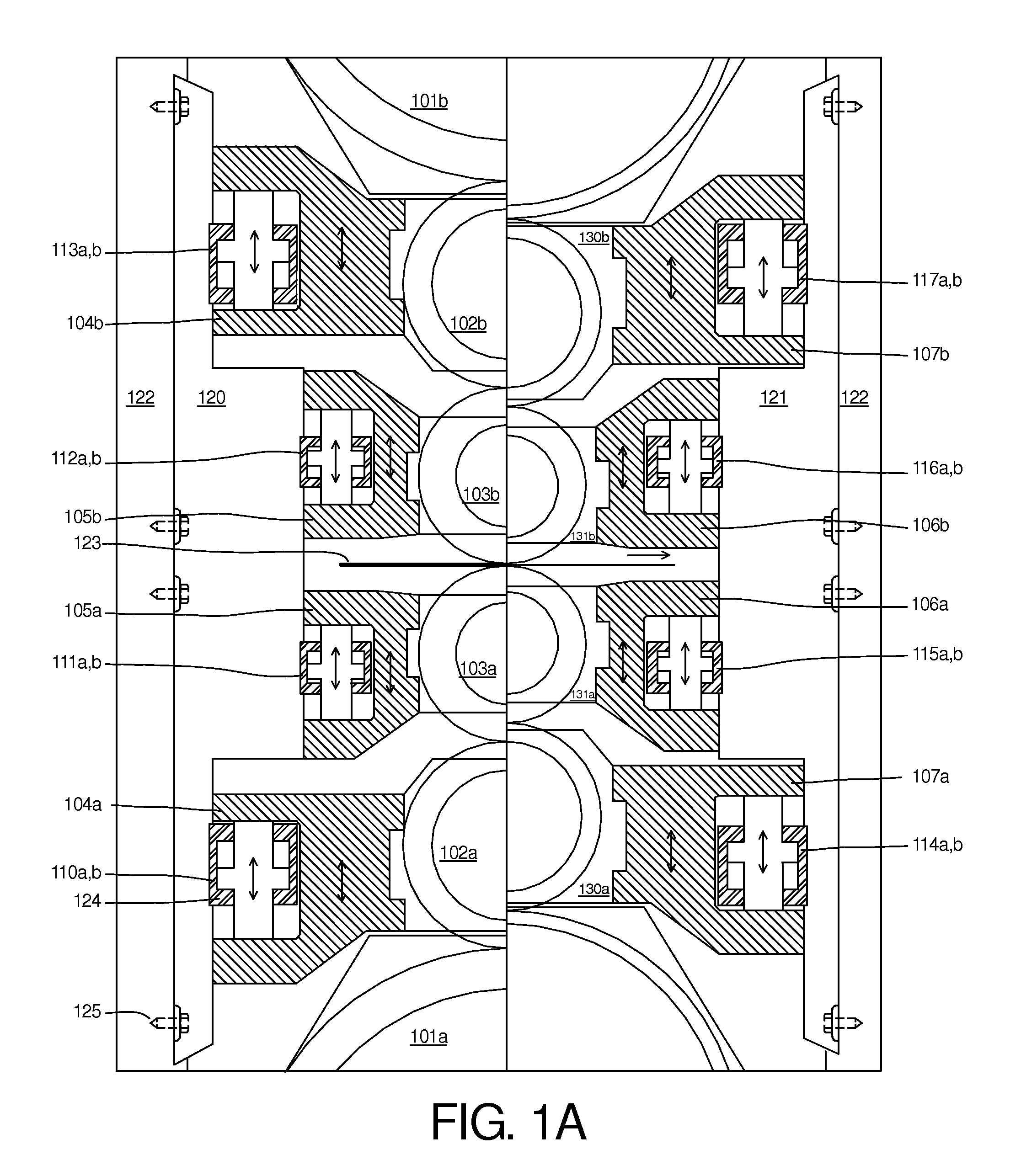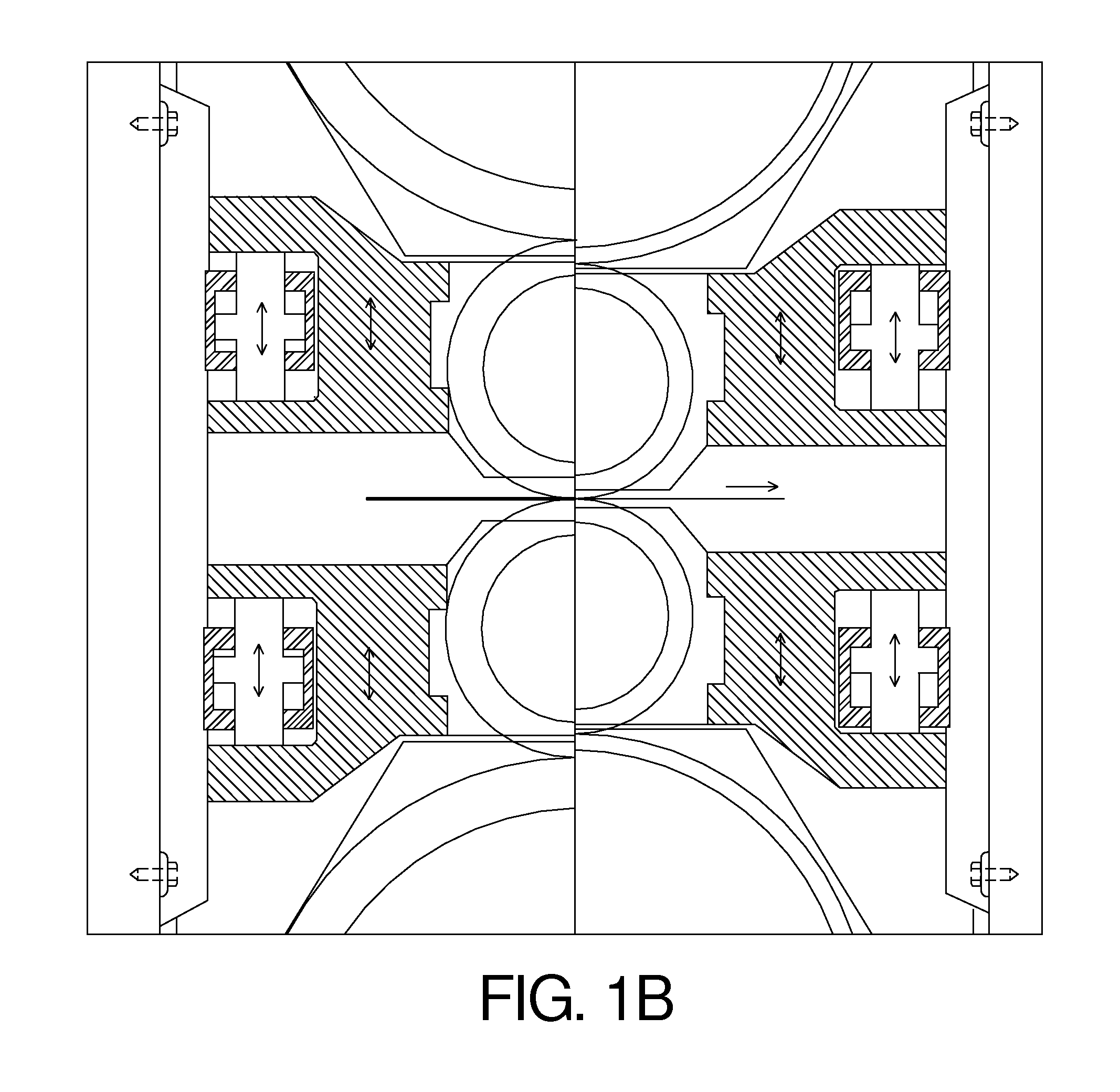Methods of Shifting and Bending Rolls in a Rolling Mill
a technology of rolling mill and rolling mill, which is applied in the direction of metal rolling arrangement, counter-pressure devices, manufacturing tools, etc., can solve the problems of high rolling end deflection, high bending force, and affecting the bearing life, and achieves the effect of easy insertion into the mill and good bearing li
- Summary
- Abstract
- Description
- Claims
- Application Information
AI Technical Summary
Benefits of technology
Problems solved by technology
Method used
Image
Examples
Embodiment Construction
[0023]FIG. 1 is one embodiment of the mill window as conceived in the present invention. For convenience, Table 1 lists the features in the mill window as particularly directed to the roll bending. Other features of the mill are not shown.
TABLE 1FIG. 1101a, bBack Up Roll (Lower and Upper)102a, bIntermediate Roll (Lower and Upper)103a, bWork Roll (Lower and Upper)104a, bLeft Intermediate Roll Bending Block (Lower and Upper)105a, bLeft Work Roll Bending Block (Lower and Upper)107a, bRight Intermediate Roll Bending Block (Lower and Upper)106a, bRight Work Roll Bending Block (Lower and Upper)110a, bLeft Lower Intermediate Roll Bending Block Cylinders111a, bLeft Lower Work Roll Bending Block cylinders112a, bLeft Upper Work Roll Bending Block Cylinders113a, bLeft Upper Intermediate Roll Bending Block Cylinders114a, bRight Lower Intermediate Roll Bending Block Cylinders115a, bRight Lower Work Roll Bending Block Cylinders116a, bRight Upper Work Roll Bending Block Cylinders117a, bRight Upper...
PUM
| Property | Measurement | Unit |
|---|---|---|
| Angle | aaaaa | aaaaa |
| Force | aaaaa | aaaaa |
| Pressure | aaaaa | aaaaa |
Abstract
Description
Claims
Application Information
 Login to View More
Login to View More - R&D
- Intellectual Property
- Life Sciences
- Materials
- Tech Scout
- Unparalleled Data Quality
- Higher Quality Content
- 60% Fewer Hallucinations
Browse by: Latest US Patents, China's latest patents, Technical Efficacy Thesaurus, Application Domain, Technology Topic, Popular Technical Reports.
© 2025 PatSnap. All rights reserved.Legal|Privacy policy|Modern Slavery Act Transparency Statement|Sitemap|About US| Contact US: help@patsnap.com



